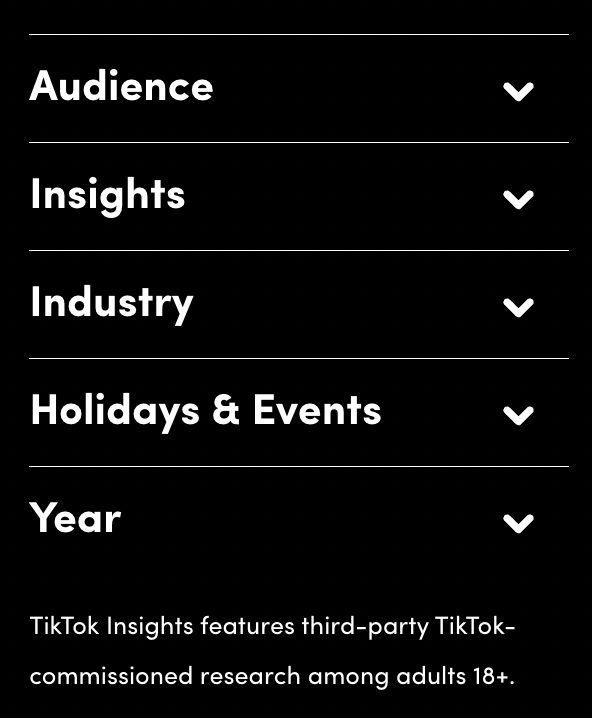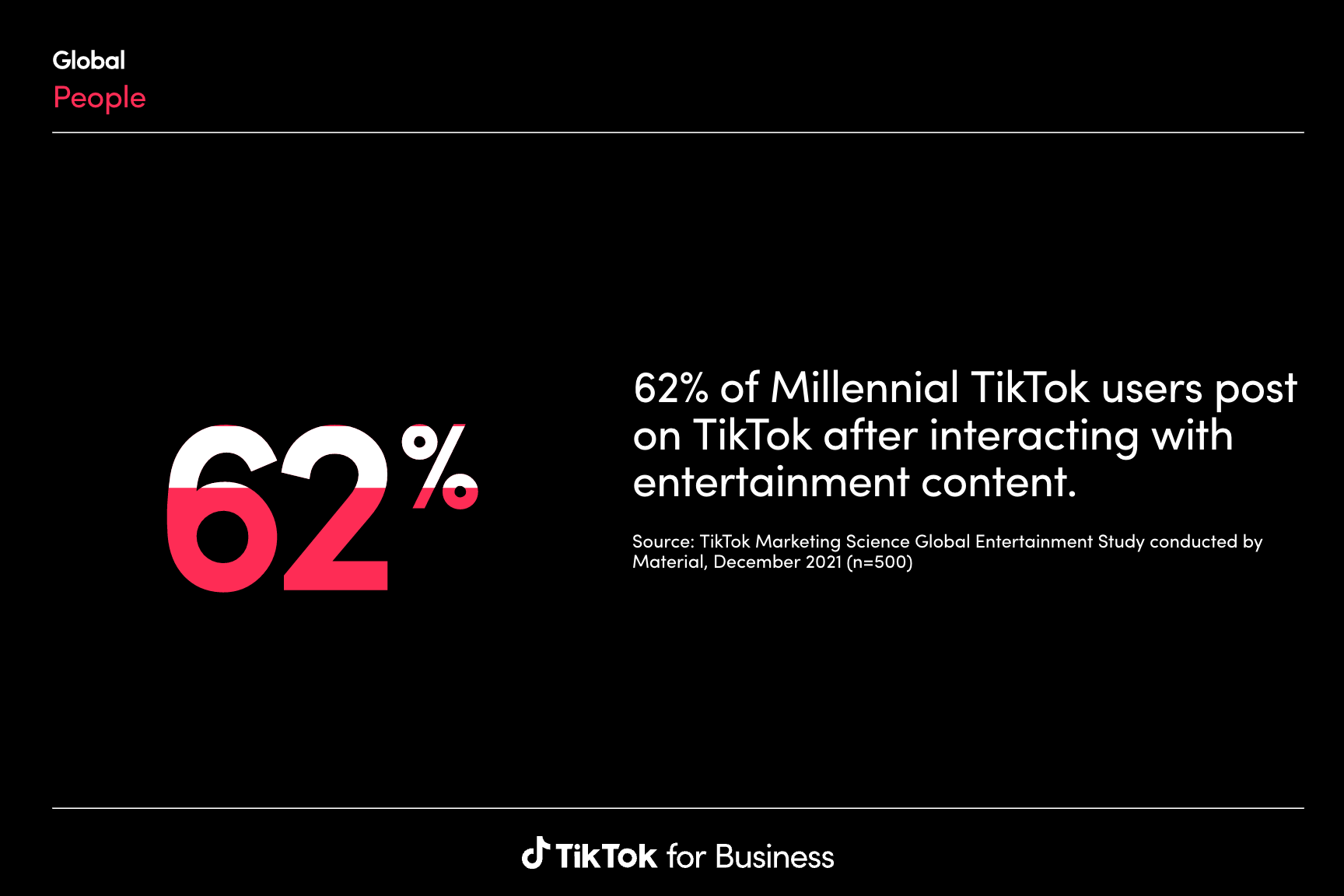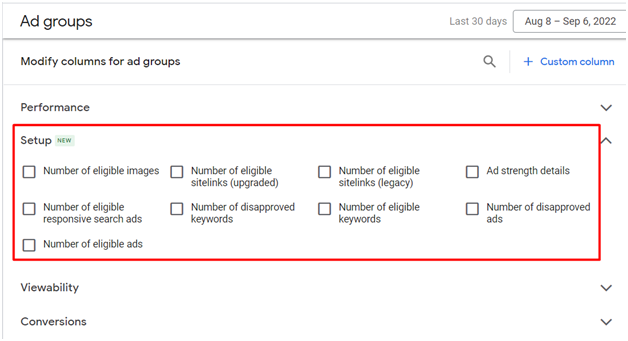SEO
Free SEO Analysis
SEO Services
Content Marketing Services
Local SEO
Link Building Services
Specialized SEO Services
PPC
REPUTATION MANAGEMENT
Free Reputation Management Analysis
Reputation Management Services
Review Management Services
Specialized Reputation Management Services
CEO Reputation Management
Brand Enhancement
Business and Directory Listings
Comprehensive Reputation Management Audit
SOCIAL MEDIA
Free Social Media Analysis
Specialized Social Services
WEB DEVELOPMENT
Free Website Analysis
Web Design Services
Mobile Development Services
Website Maintenance Services
Specialized Development Services
MARKETING AUTOMATION
Free Marketing Automation Analysis
Specialized Marketing Automation Services
Comprehensive Marketing Automation
INDUSTRIES
ABOUT DMA
Digital Marketing
Digital Marketing News 09/13/2022 – 09/19/2022
Request a quote
Its Fast, Easy & Free
Executive Summary
TikTok Insights Gains More Data From Different Industries and Countries
Microsoft Advertising Launches A Multi-Platform Feature for SMBs
Google Ads Rolls Out New Setup Columns in Campaigns and Ad Groups
Google Identifies and Explains 11 Examples of Invalid Traffic
Google Updates Their Guide on Preventing Website Spam and Abuse
This week on the latest digital marketing updates: TikTok Insights releases more global data, new Multi-platform feature from Microsoft Advertising Smart Campaigns, new Setup columns in the Google Ads Campaigns and Ad Groups tables, and the latest updates on the Google Ad Traffic Quality site & website spam and abuse prevention resource page.
Here are the latest news, trends, and updates in detail:
TikTok Insights Gains More Data From Different Industries and Countries
Just in time for holiday planning, TikTok Insights drops new creator, advertising, and regional data from around the world.
TikTok for Business has announced that the Insights tool has been updated with more data that will help brands and advertisers get to know their audience better. This could help you plan for the holiday season, as TikTok Insights provides granular data on key market trends.
The tool has six category filters, which you can use to narrow down data to the specific usage information you need for your campaigns.


TikTok Insights provides data sources that can be copied, or you can download the information to use in presentations and planning sessions.

This tool can help you map out an optimal approach for your TikTok marketing. The regional data available are also useful in gaining market-specific insights for your campaigns.

Though TikTok for Business has improved the Insights tool, there are still limitations on how much data you can customize. However, it’s a handy way to learn key usage trends and behaviors that could enhance your TikTok marketing strategy.
Microsoft Advertising Launches A Multi-Platform Feature for SMBs
The new Multi-platform feature lets small business owners run ads across any mix of Microsoft Advertising, Google, Facebook, and Instagram — all from one interface.
In a blog post, Microsoft Advertising announced that they launched a newly redesigned Smart Campaigns experience with a new Multi-platform feature in the United States “to make online advertising for small businesses easier, smarter, and better.” The feature isn’t available to everyone yet but you can sign up for the waitlist here.
Multi-platform is an all-in-one Microsoft Advertising feature that lets you extend your reach at scale by running ads across Google, Facebook, and Instagram. Not only does this feature provide a single place for the management and analytics of your campaigns across platforms, but it also utilizes Microsoft AI, which automatically optimizes your budget for the best performance. Smart Campaigns and Multi-platform can help you build a brand new website from scratch or generate one from your business’s Facebook page in seconds.
Multi-platform is free to use when you set up a Smart Campaign in Microsoft Advertising — you only pay when someone clicks your ad. Here’s a rundown of everything you can do on Multi-platform:
Run search ad campaigns on Microsoft Advertising and Google Ads
Run social ad campaigns on Facebook and Instagram
Publish content, like, and reply to comments on Facebook, Instagram, LinkedIn, and Twitter
Review key metrics such as impressions, engagements, and audience growth from one place
Set advertising goals to increase online visits, physical visitors, or calls to your business
Automate ad content
Optimize your ROI with AI
Leverage AI-powered campaign management
Connect your ads with relevant searches
Leverage audience targeting
You can learn more about the Multi-platform feature here.
Google Ads Rolls Out New Setup Columns in Campaigns and Ad Groups
Some advertisers may already have access to the new Setup columns in the Campaigns and Ad Groups tables of Google Ads.
Google has created new Setup columns in the statistics table of Campaigns and Ad Groups, and they’re slowly rolling out to advertisers’ accounts.
Columns in advertisers’ statistics tables provide a variety of information about a Google Ads account. According to Google’s Ads Product Liaison Ginny Marvin, the data provided in the Setup columns help you quickly identify any campaign or ad group setup issues. These include the following:
Disapproved ads
Disapproved keywords
Eligible ads
Eligible keywords
Eligible responsive search ads
Eligible ad groups
Responsive search ad-strength details
Eligible sitelink extension
Eligible image extension
Internet marketer Steve Seeley also shared this update on Twitter:

Google Identifies and Explains 11 Examples of Invalid Traffic
The Google Ad Traffic Quality site gets a revamp and now includes more examples of invalid traffic with animations that help explain them.
Google Policy Transparency staff Aurora Morales announced on Twitter that their team has revamped the Google Ad Traffic Quality site. New examples of invalid traffic are available, along with helpful animations.
Invalid traffic is any activity that doesn't come from a real user with genuine interest. The Ad Traffic Quality team is “dedicated to stopping all types of invalid traffic” so that advertisers don't have to pay for it and the people who cause it don't profit from it. It’s also worth noting that invalid traffic affects Google AdSense, Google AdMob, and Google Ad Manager publications. Here are 11 examples of invalid traffic, as defined by Google:
Invalid user activity - Happens when a real person interacts with an ad, but not out of actual interest. This includes unintentional clicks and clicks with fraudulent intentions.
Accidental clicks - Happens when users didn't intend to click on an ad. This often occurs as a result of poor ad placement.
Ad hiding - Placing ads in ways that make them impossible to see under any normal circumstances.
Ad injection - Happens when ads are inserted into pages without the publisher’s knowledge and are often created by free WiFi applications, browser plugins, and 'software bundles.'
Ad stacking - This is when multiple ads are stacked in layers in a single ad space, and only the top ad shows.
Botnets - These are automated software programs that run on internet servers or hijacked computers.
Clickjacking - This is the use of deceptive elements (e.g., buttons) or interfaces on a web page in a way that a user is tricked into clicking on an ad that they didn't expect to click on.
Falsely Represented Inventory - This is based on ad traffic falsely portrayed as coming from high-value users or a site claiming it is a different site.
Misrepresentation of in-stream and out-stream video - In-stream video can generate invalid traffic when it is primarily based on non-human traffic to videos, in which an in-stream video ad is marked or measured incorrectly as having been viewed by a real user.
Malware - Any kind of software that's designed to harm a computer.
Pop-under ads - Ads that are displayed in a new browser window that are typically opened under (behind) the active browser window.
Google Updates Their Guide on Preventing Website Spam and Abuse
Google identifies the measures website owners can take to prevent website abuse and identify spam accounts in the latest update made to the Google Search Central resource page.
The Google Search Central resource page for website abuse and spam has been updated with more robust suggestions that encourage website owners to be proactive in preventing these threats.
Prior to this update, the first section of the page was about free web hosting services. Now it’s been replaced with “Prevent abuse on your site and platform,” a new content that gives website owners actionable steps to protect their space on the web.
Preventing abuse on your platform or site is usually not hard. Here are the steps you can take, according to Google:
Publish a clear abuse policy and communicate it to your users (e.g., during the signup process)
Allow trusted users to report content on your property that they consider as spam
Keep a record of signups and other user interactions with your platform, and try to identify typical spam patterns
Consider adding the noindex robots meta tag on posts that come from new users that don't have any reputation on your platform
Consider adding a nofollow or ugc rel attribute to all links in untrusted content
Use manual approval for suspicious user interactions
Use a blocklist to prevent repetitive spamming attempts
Block automated account creation
Monitor your property for abuse
What you can do next
Use the TikTok Insights tool to learn key usage trends and behaviors that will help you enhance your TikTok marketing strategy and increase ROI.
Try the Multi-platform feature of Smart Campaign in Microsoft Advertising to conveniently run optimized ads across different platforms.
Quickly identify any campaign or ad group setup issues through the new Setup columns in the statistics table of Campaigns and Ad Groups.
Take proactive steps in protecting your website or platform against abuse and spam activities to avoid violating Google’s quality guidelines.
Elevate Your Marketing
Be Everywhere on Social Media Without Needing an Army of Marketers
Discover different ways to be present on social media platforms even without dedicating a whole team to it. Read more >
Things to Keep in Mind When Assessing the Success of PPC Campaign
Learn the factors you need to take into consideration when running a PPC campaign and the best practices in PPC marketing. Read more >
Our Sales team